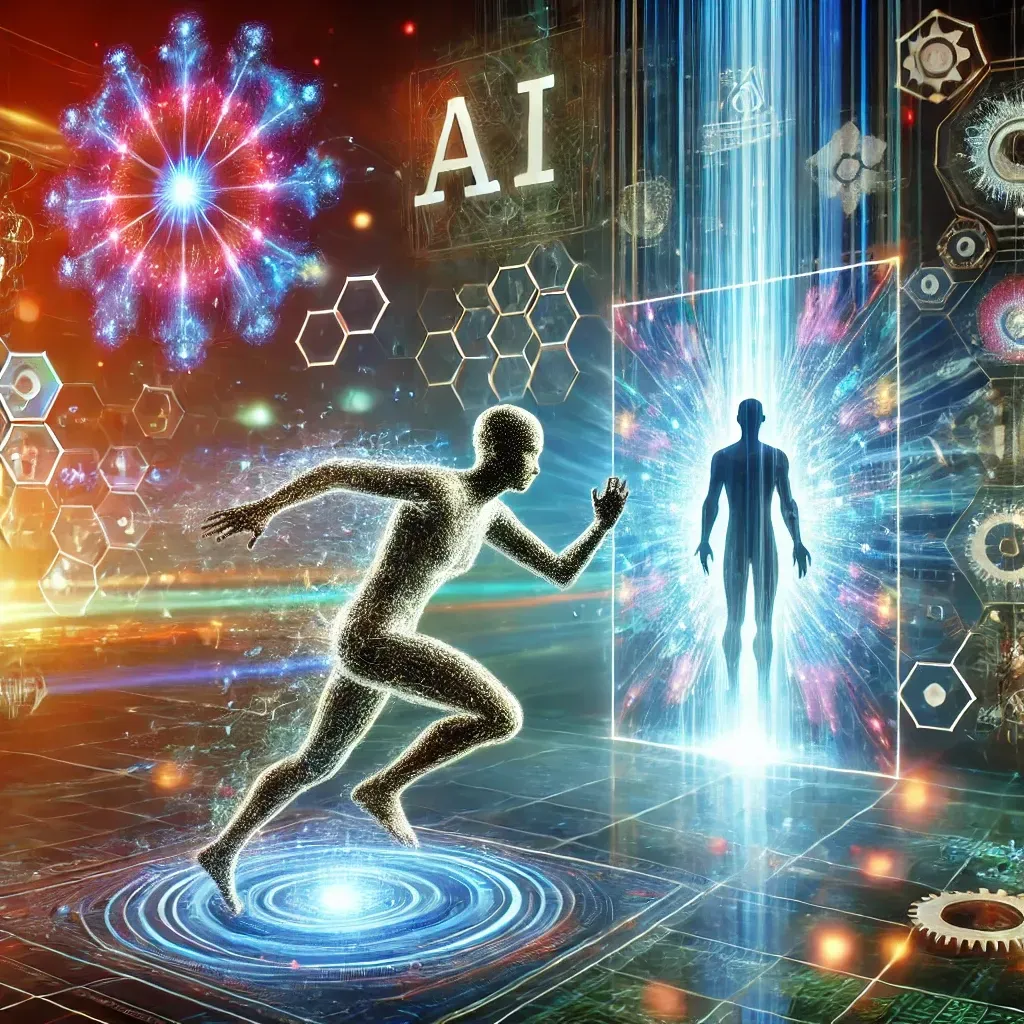AI Insights & Quick Answers
Deep dives, how-to guides, and rapid-fire solutions to level up your workflows
Elevate Your Business Game With Smarter No-Code Systems and AI Integration

The Biggest Barrier to AI Isn’t the Tech—It’s You
Introduction: The Hesitation Trap
"AI is ready, but are you?"
AI has already transformed industries, but many are still holding back. The fear of making mistakes or waiting for perfect conditions keeps teams and leaders from diving in. The real key to AI fluency isn’t about perfection—it’s about messy, consistent action that drives progress.
In the race for AI adoption, the technology isn’t the problem—it’s human hesitation. Waiting for the perfect time to dive in and fully understand AI before using it can cost you creativity, opportunities, and innovation. This hesitation slows down learning cycles, impacting not just individuals, but teams and entire industries.
The message is clear: Mastery isn't the goal—motion is. AI readiness builds through active engagement, not through waiting for perfect conditions.
This hesitation isn't just personal—it affects entire groups. Delaying AI engagement leads to missed learning opportunities and unrealized potential.

How Perfectionism and Fear Block Progress
Big Idea:
Many professionals avoid engaging with AI because they feel they need a complete understanding first. However, expertise develops through hands-on practice, not theory. Waiting to feel “ready” often leads to perpetual delay.
Example:
Think of learning a new language. You don’t wait until you're fluent to start speaking. You begin with broken sentences and improve over time. AI is no different—you get better as you use it.
Insight:
"I’ll engage when I’m ready" becomes the very thought that prevents people from ever becoming ready.
"Every time you hesitate to engage with AI, you delay the very learning process that will make you proficient."
Small Steps Create Big Momentum
Big Idea:
Progress in AI adoption is built through incremental actions. The more often you engage in small, low-risk AI experiments, the more you sharpen your instincts. This creates a feedback loop of continuous learning.
Practical Example:
Start by using AI to assist with low-stakes tasks like brainstorming ideas or summarizing notes. By starting small, you quickly grow more comfortable with AI’s potential.
Insight:
Early, imperfect action is more valuable than waiting for mastery. Momentum builds faster than you think.
Practical Tip:
Start with small, easy-to-execute AI tasks, such as automating routine data collection or generating draft content. Build from these minor experiments to larger, more impactful projects.
Avoid Becoming a Bottleneck for Your Team
Big Idea:
Hesitation impacts not only personal progress but also team-wide innovation. Leaders who delay adopting AI unintentionally signal to their teams that AI isn't ready, stifling experimentation and slowing progress across the organization.
Example:
When a leader avoids engaging with AI, their team also slows down, missing out on valuable insights and competitive advantages that early adoption could bring.
Insight:
AI readiness is contagious. Teams that experiment together build collective intelligence faster, leading to more agile, innovative workplaces.
"Are you empowering your team to experiment with AI, or holding them back with hesitation?"
Embrace Messy Progress—Perfect is the Enemy of Good
Big Idea:
Waiting for perfect workflows or total understanding before adopting AI is counterproductive. Like neural networks, humans learn best through trial and error. Every interaction with AI helps build familiarity and efficiency.
Practical Example:
Share a personal story of how experimenting with AI—making small mistakes along the way—has helped streamline your workflow. These micro-failures led to better understanding and smoother processes.
Key Takeaway:
Every interaction with AI is a micro-experiment. The goal isn’t to achieve perfection but to move fast, learn fast, and adjust.
"Mastery isn’t a prerequisite—it’s the byproduct of consistent, messy engagement."
How to Stop Hesitating and Start Building AI Fluency Today
AI fluency doesn’t come from studying—it comes from doing. Small, consistent steps create the momentum needed to build expertise over time. The process is about being proactive, experimenting, and learning through experience. Every interaction with AI, no matter how minor, contributes to building a deeper understanding. By embracing these small but consistent efforts, you gradually build a foundation of knowledge that leads to true fluency.
Take a moment to reflect on where hesitation is blocking your AI adoption. Challenge yourself to take one small step today—whether it’s asking AI a question, automating a simple task, or generating a rough draft of a project.
"Will you take action today, or continue being the bottleneck that holds your future back?"

Most business owners are frustrated from wasting time and money. At Systems Shaper we turn your business into a selling machine. Clients who work with us attract more customers and build stronger brands.
Company
Services
Policies
Made With ❤️ By Systems Shaper
Systems Shaper Inc. © 2025. All rights reserved.
